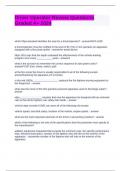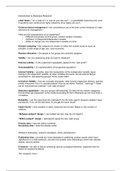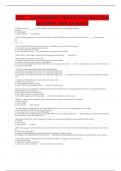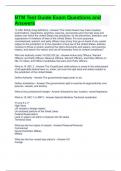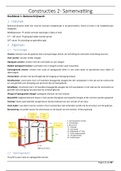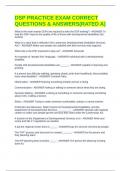Chapter 11: Health Communication
Health communication comprises lifestyle choices about people make, how they talk with their
friends and families about illness and health, the kinds of social support that they give and receive,
decisions to reveal or conceal private information about pain or fear, media images and appeals
splashed over billboards or the sides of buses and on TV, and Internet activity. Life expectancy and
disease survival rates are even highly correlated with the number of friends that you have and how
much you talk to people every day. In short, health communication is very much built into both
everyday communication and relationships.
Health communication is a broad area within the discipline of communication. There are three key
topics of health communication: 1. Patient-provider relationships, 2. Social networks, and 3. Media
and technology.
Patient and provider relationships
Patients and providers (medical doctors, nurses, dentists, dental hygienists, optometrists, physical
therapists, psychologists, and so on) meet in a variety of circumstances.
PATIENT- PROVIDER IDENTITIES
As with all relationships and identities, those created during patient and provider interactions are co-
constructed. As such, both parties are responsible for the relationships and identities created during
the interaction. However, interactants may not always agree with or approve of the relationships and
relational identities being created.
Altercasting involves the ways in which a person’s communication influences the identity of another
person. Altercasting can work in two ways. First, a person’s communication can force a particular
identity on another person. Second, as a person attempts to create a particular identity, the
communication of another may either affirm or negate that identity.
HOW PATIENTS AND PROVIDERS COMMUNICATE
Patient and provider interactions most often transact relationships that place the patient in a passive
role and place the provider in a dominant role. Providers tend to dominate interactions with patients
through questions and directives. Through directives, or commands, the dominant position of
providers is further substantiated.
Providers also focus most often on establishing a patient’s physical problems rather than psychosocial
problems (social and relational issues accompanying or even causing illness). This approach likens
patients to machines and gives no account to relevant emotional and relational needs. When patients
attempt to incorporate such issues into the interaction, provides tent to interrupt them and refocus
on physical symptoms. Consequently, providers may miss opportunities to discover the actual cause
of a patient’s problem or miss relevant treatment opportunities.
Further complicating matters is an unwillingness of some patients to fully disclose their medical
concerns to providers. Especially when dealing with personal or embarrassing issues, patients tend to
avoid disclosing information that would be pertinent to providers.
IMPROVING PATIENT -PROVIDER COMMUNICATION
A number of health communication scholars have noted the importance of a patient-provider
relationships based on partnership or mutuality, in which the interactants share control of the
Health communication comprises lifestyle choices about people make, how they talk with their
friends and families about illness and health, the kinds of social support that they give and receive,
decisions to reveal or conceal private information about pain or fear, media images and appeals
splashed over billboards or the sides of buses and on TV, and Internet activity. Life expectancy and
disease survival rates are even highly correlated with the number of friends that you have and how
much you talk to people every day. In short, health communication is very much built into both
everyday communication and relationships.
Health communication is a broad area within the discipline of communication. There are three key
topics of health communication: 1. Patient-provider relationships, 2. Social networks, and 3. Media
and technology.
Patient and provider relationships
Patients and providers (medical doctors, nurses, dentists, dental hygienists, optometrists, physical
therapists, psychologists, and so on) meet in a variety of circumstances.
PATIENT- PROVIDER IDENTITIES
As with all relationships and identities, those created during patient and provider interactions are co-
constructed. As such, both parties are responsible for the relationships and identities created during
the interaction. However, interactants may not always agree with or approve of the relationships and
relational identities being created.
Altercasting involves the ways in which a person’s communication influences the identity of another
person. Altercasting can work in two ways. First, a person’s communication can force a particular
identity on another person. Second, as a person attempts to create a particular identity, the
communication of another may either affirm or negate that identity.
HOW PATIENTS AND PROVIDERS COMMUNICATE
Patient and provider interactions most often transact relationships that place the patient in a passive
role and place the provider in a dominant role. Providers tend to dominate interactions with patients
through questions and directives. Through directives, or commands, the dominant position of
providers is further substantiated.
Providers also focus most often on establishing a patient’s physical problems rather than psychosocial
problems (social and relational issues accompanying or even causing illness). This approach likens
patients to machines and gives no account to relevant emotional and relational needs. When patients
attempt to incorporate such issues into the interaction, provides tent to interrupt them and refocus
on physical symptoms. Consequently, providers may miss opportunities to discover the actual cause
of a patient’s problem or miss relevant treatment opportunities.
Further complicating matters is an unwillingness of some patients to fully disclose their medical
concerns to providers. Especially when dealing with personal or embarrassing issues, patients tend to
avoid disclosing information that would be pertinent to providers.
IMPROVING PATIENT -PROVIDER COMMUNICATION
A number of health communication scholars have noted the importance of a patient-provider
relationships based on partnership or mutuality, in which the interactants share control of the




